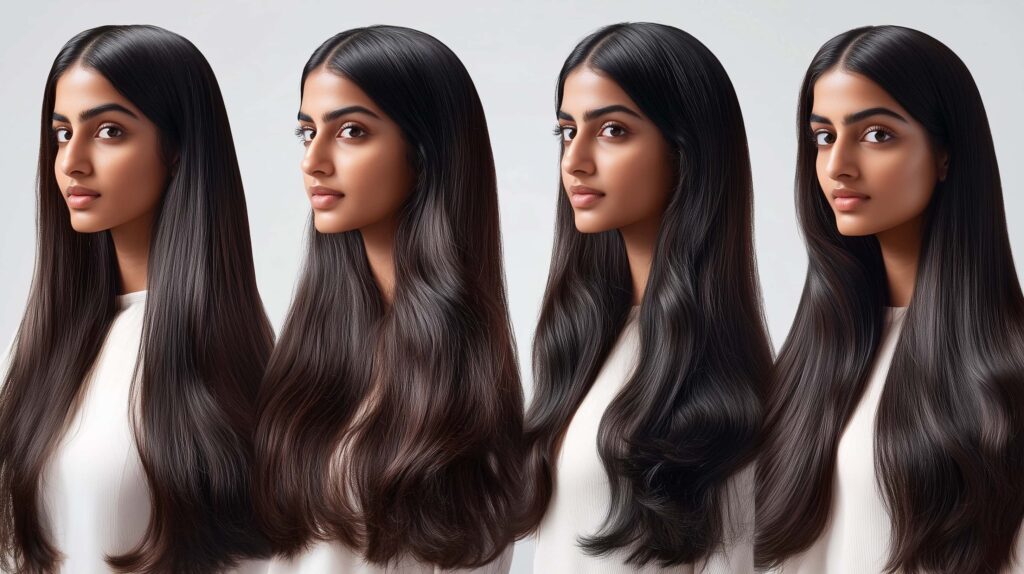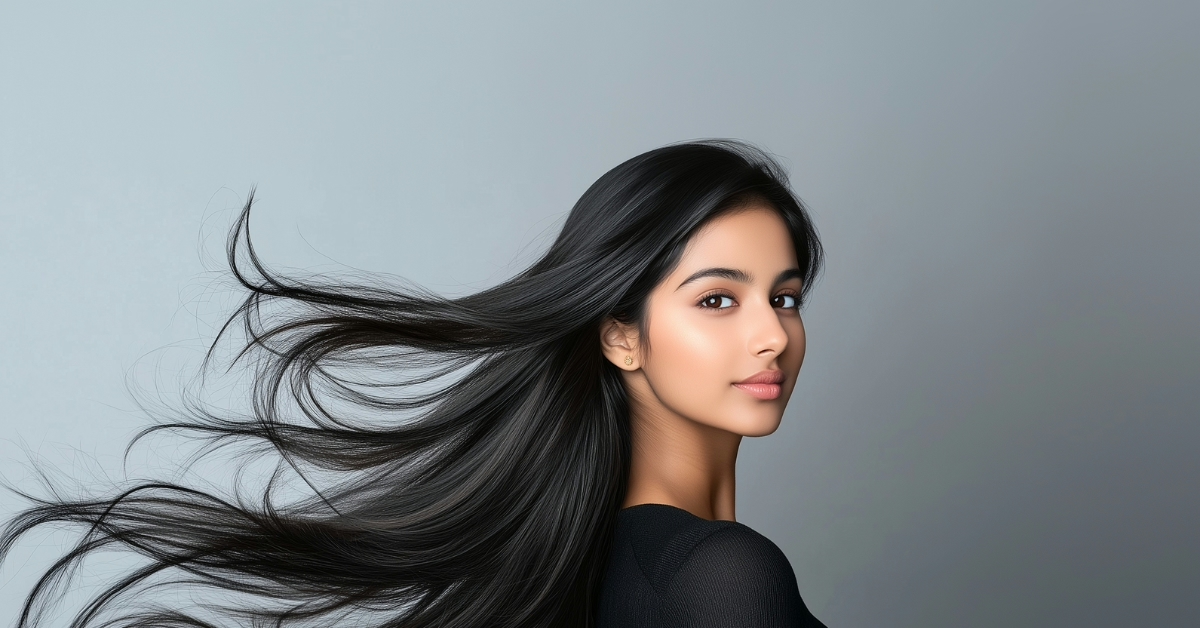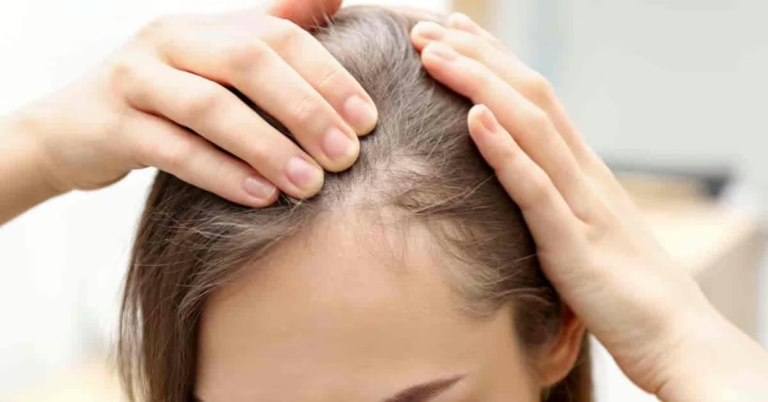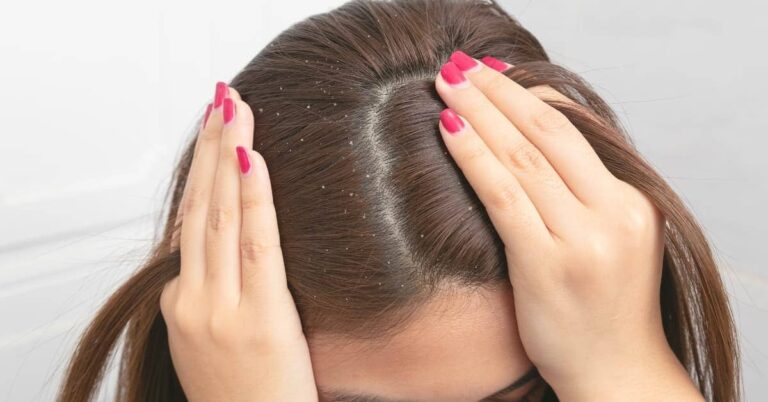Which Hair Oil Suits Your Hair Type Best?
Choosing the right hair oil can transform your hair care routine, addressing specific concerns and enhancing the natural beauty of your locks. Whether you struggle with oily roots, dry ends, or a combination of both, the perfect hair oil can make a significant difference. This comprehensive guide will help you identify your hair type and recommend the best oils tailored to your needs, ensuring healthy, vibrant, and luscious hair.
Understanding Your Hair Type

Before diving into the world of hair oils, it’s essential to understand your hair type. Your hair type determines how it reacts to different treatments, products, and environmental factors. Identifying whether your hair is oily, dry, combination, or normal will help you choose the most suitable oil to enhance its health and appearance.
Identifying Oily, Dry, and Combination Hair
Oily Hair: If your scalp produces excess sebum, your hair tends to look greasy and limp shortly after washing. Oily hair often has a shiny appearance and may feel heavy or weighed down. Common signs include frequent scalp itching and dandruff caused by the overproduction of oil.
Dry Hair: Dry hair lacks moisture, making it feel brittle and look dull. It is prone to breakage, split ends, and frizz. Dry hair often requires more intensive hydration and nourishment to restore its natural softness and shine.
Combination Hair: Combination hair exhibits characteristics of both oily and dry hair. Typically, the scalp and roots are oily, while the ends are dry. This hair type requires a balanced approach to maintain the right level of moisture without making the roots excessively greasy.
Normal Hair: Normal hair maintains a healthy balance of moisture and oil, appearing shiny and feeling soft without being too oily or dry. It generally requires minimal maintenance to stay healthy and vibrant.
Understanding these hair types is crucial as it lays the foundation for selecting the right hair oil that caters to your specific needs, ensuring optimal results.
Top Hair Oils for Different Hair Types

Choosing the right hair oil involves understanding the unique benefits each oil offers and how it aligns with your hair type. Here’s a detailed look at the best oils for different hair types:
Best Oils for Oily Hair
Oily hair requires lightweight oils that can regulate sebum production without adding extra grease. The goal is to balance oil levels, promote a healthy scalp, and prevent hair from looking limp.
Jojoba Oil: Jojoba oil closely resembles the natural sebum produced by your scalp, making it an excellent choice for oily hair. It helps in balancing oil production, preventing the scalp from becoming too greasy. Jojoba oil also moisturizes the hair without leaving a heavy residue, promoting a healthy scalp environment.
Grapeseed Oil: Grapeseed oil is another lightweight option ideal for oily hair. It’s rich in antioxidants and vitamin E, which help in strengthening hair strands and preventing breakage. Grapeseed oil also aids in unclogging hair follicles, reducing dandruff, and maintaining a clean, balanced scalp.
Tea Tree Oil: Known for its antibacterial and antifungal properties, tea tree oil helps in treating scalp conditions like dandruff and seborrheic dermatitis. When used in moderation, it can control excess oil production and keep the scalp healthy without making the hair greasy.
Best Oils for Dry Hair
Dry hair thrives on deep hydration and nourishment. The right oils can restore moisture, reduce frizz, and add a natural shine to your locks.
Coconut Oil: Coconut oil is a powerhouse for dry hair. It penetrates deeply into the hair shaft, providing intense hydration and reducing protein loss. Regular use of coconut oil can make your hair softer, smoother, and more manageable, while also preventing breakage and split ends.
Argan Oil: Argan oil is rich in essential fatty acids, vitamin E, and antioxidants, making it perfect for nourishing dry hair. It helps in restoring moisture, adding shine, and taming frizz. Argan oil also strengthens hair, promoting elasticity and reducing the likelihood of breakage.
Olive Oil: Olive oil is a versatile oil that provides deep conditioning for dry hair. It penetrates the hair follicles, delivering moisture and nutrients that revitalize dull and lifeless strands. Olive oil also enhances the hair’s natural shine and softness, making it an excellent choice for those with dry and brittle hair.
Best Oils for Combination Hair
Combination hair requires versatile oils that can cater to both oily roots and dry ends. These oils should provide balanced moisture without exacerbating oiliness at the scalp.
Almond Oil: Almond oil is lightweight yet deeply nourishing, making it suitable for combination hair. It hydrates the ends without making the scalp greasy. Almond oil also contains vitamins A, B, and E, which help in strengthening hair and promoting overall hair health.
Olive Oil: Olive oil is a versatile option for combination hair. It can be applied sparingly to the roots to manage oiliness while providing ample moisture to the ends. Its rich nutrient profile ensures that all parts of the hair receive the necessary nourishment.
Argan Oil: Argan oil is another excellent choice for combination hair. It provides the right balance of hydration and nourishment, ensuring that the scalp remains oil-free while the ends stay moisturized and healthy.
How to Apply Hair Oil Correctly

Applying hair oil correctly is crucial to maximize its benefits and avoid common mistakes that can lead to undesirable results. Proper application techniques ensure that the oil is absorbed effectively, promoting healthier hair and scalp.
Step-by-Step Application Guide
Warm the Oil Slightly: Warming the oil enhances its absorption into the hair and scalp. You can do this by placing the oil in a bowl and heating it in hot water for a few minutes. Ensure the oil is warm, not hot, to prevent scalp burns.
Apply Evenly from Roots to Tips: Start by applying the oil to the scalp, massaging it gently to stimulate blood circulation and promote hair growth. Then, work the oil through the lengths and ends of your hair to ensure even distribution.
Massage Gently into the Scalp: Massaging the oil into your scalp for about 5-10 minutes helps in better absorption and relaxation. It also ensures that the oil reaches the hair follicles, providing nourishment from the roots.
Leave It On for a Specific Duration: Depending on your hair type and the oil used, leave the oil on for at least 30 minutes. For deeper conditioning, you can leave it overnight. Cover your hair with a shower cap or a warm towel to enhance oil penetration.
Wash Thoroughly: After the designated time, wash your hair with a mild shampoo to remove excess oil. Ensure that you rinse thoroughly to prevent any residue that can make your hair look greasy.
Following these steps ensures that you get the maximum benefits from your chosen hair oil, promoting healthier and more vibrant hair.
Addressing Common Concerns and Mistakes

While hair oils can significantly improve your hair health, incorrect usage can lead to common issues such as over-oiling, scalp irritation, and ineffective results. Understanding these pitfalls and knowing how to avoid them is essential for maintaining healthy hair.
Avoiding Over-Oiling and Scalp Issues
Signs of Over-Oiling: Over-oiling can make your hair look greasy and weigh it down, especially if you have naturally oily hair. It can also clog hair follicles, leading to dandruff and scalp irritation. If you notice excessive oiliness, itching, or dandruff after oiling, you might be using too much oil.
Proper Oil Quantities: To avoid over-oiling, use the right amount of oil based on your hair length and type. Generally, 2-3 tablespoons are sufficient for medium-length hair, while longer hair may require more. Adjust the quantity to ensure your hair feels nourished but not greasy.
Frequency of Application: The frequency of oiling depends on your hair type. Oily hair may benefit from oiling once a week, while dry hair might require oiling two to three times a week. Combination hair may need a balanced approach, focusing on the ends more than the roots.
Alternative Remedies: If you experience scalp issues despite proper oil use, consider incorporating other scalp treatments like aloe vera or tea tree oil. These can help in soothing irritation and maintaining scalp health.
By monitoring your hair’s response and adjusting your oiling routine accordingly, you can prevent over-oiling and maintain a healthy scalp.
Realistic Expectations and Results Timeline

Setting realistic expectations is crucial when using hair oils. Understanding that results vary based on hair type, condition, and consistency of use will help you stay motivated and patient throughout your hair care journey.
What to Expect and When
Immediate Effects: Right after applying hair oil, you might notice your hair feels smoother and looks shinier. The oil provides an instant glow, making your hair appear healthier and more vibrant.
Short-Term Results (1-2 Weeks): Within the first couple of weeks, regular oiling can reduce frizz and make your hair more manageable. You might also notice an improvement in scalp health, such as reduced dandruff or itching.
Medium-Term Results (1-3 Months): With consistent use, you can expect stronger hair that is less prone to breakage and split ends. Dry hair types will show significant improvement in moisture levels, while oily hair types will have a more balanced scalp without excessive oiliness.
Long-Term Results (3+ Months): Over an extended period, hair oils can promote overall hair growth and thickness. The health of your hair improves, making it more resilient to damage from styling and environmental factors. Regular oiling can also enhance the natural color and shine of your hair, giving it a vibrant and youthful appearance.
Factors Influencing Results: The effectiveness of hair oils depends on various factors, including your hair type, the oil used, and how consistently you apply it. Genetic factors and overall health also play a role in how quickly and effectively your hair responds to oiling.
Patience and consistency are key to achieving the best results. By maintaining a regular oiling routine and choosing the right oils for your hair type, you can enjoy healthier and more beautiful hair over time.
Suitability for Different Hair Types

Different hair types have unique needs, and the suitability of various oils ensures that each type receives the appropriate level of care and nourishment. Understanding how specific oils cater to your hair type will help you customize your hair care routine effectively.
Customizing Oil Use for Your Hair Needs
Fine Hair: For fine hair, use lightweight oils like jojoba or grapeseed. These oils provide nourishment without weighing the hair down, maintaining volume and preventing greasiness. Apply sparingly to the ends to avoid excess oil at the roots.
Thick Hair: Thick hair benefits from richer oils like coconut and olive oil. These oils penetrate deeply, providing intense hydration and reducing frizz. Apply generously to manage bulk and maintain softness and shine.
Curly Hair: Curly hair tends to be drier and requires oils that provide moisture and definition. Argan and almond oils are excellent choices, as they enhance curl patterns while keeping the hair hydrated and frizz-free.
Color-Treated Hair: For color-treated hair, use oils that protect against damage and preserve color. Argan and avocado oils are ideal as they offer deep nourishment and shield the hair from environmental stressors that can fade color.
Damaged Hair: Damaged hair needs intensive repair and strengthening. Oils like castor oil and rosemary oil help in repairing split ends, reducing breakage, and promoting overall hair health. Regular use can restore the hair’s natural strength and elasticity.
Sensitive Scalp: If you have a sensitive scalp, choose oils with soothing properties like chamomile or tea tree oil. These oils help in calming irritation and maintaining scalp health without causing allergic reactions or further irritation.
Customizing oil usage based on your specific hair needs ensures that you address your unique concerns effectively, leading to healthier and more beautiful hair.
Wrapping Up
Selecting the right hair oil tailored to your hair type can revolutionize your hair care routine, addressing specific concerns and enhancing the natural beauty of your locks. Whether you have oily, dry, combination, or normal hair, there’s an oil that can meet your needs and promote healthier, more vibrant hair.
By understanding your hair type and choosing oils that complement its unique characteristics, you can achieve the desired results. From balancing oil production in oily hair to providing deep hydration for dry strands, the right oil can make a significant difference in your hair’s health and appearance.
Ready to transform your hair care routine? Start by identifying your hair type and selecting the oil that best suits your needs. Incorporate regular oiling into your routine, follow the correct application techniques, and be patient as your hair responds to the nourishment. Share your experiences and join a community of individuals committed to achieving healthier, more beautiful hair.







